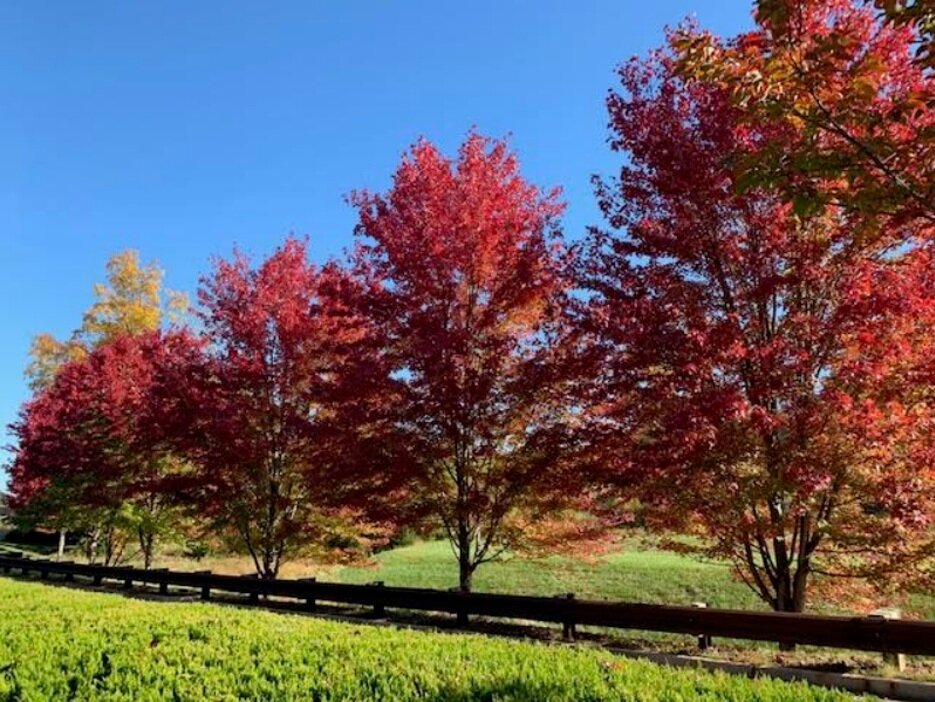Welcome October
By Anna Thayer
It is October and we all know what that means in Loudoun County--beautiful weather and spectacular views! To be fair, we have spectacular views during every season, but fall really does put on a show. This is the time our deciduous trees like to show all their multicolored splendor for us to see. They also shed and leave us with a lot of leaf clutter. But don’t be alarmed!! That leaf clutter is a good thing.
We posted a blog earlier this year about grass-cycling and the benefits of keeping your grass clippings for your lawn. This blog will talk a little about the benefits of keeping your fall leaves and how they can help your lawn and plants. Not only do they make great leaf piles to jump in, but they add nutrients back into your soil. They can be used as mulch, and they provide shelter to important insects. Then we will talk a little about your trees during this time of the year and what you should do to help them.
Mulch: Keeping your falls leaves will supply nutrients back into your lawn and garden. Try to mulch them up as much as possible and distribute them along your lawn. Just make sure there is not too much coverage so sunlight can still get to the grass. Also, you can take the mulched leaves and use them in your flower beds or vegetable gardens. You will be saving yourself some money mulching your leaves instead of buying mulch. Add them to your compost pile to boost the nutrient content and use it as organic matter in your soil. Or rake them into a pile and make a leaf mold pile. Your plants and soil will love it!
Shelter: If you can’t mulch the leaves, try to rake them in a pile and leave them in the corner of your yard. Many caterpillars and other organisms rely on fallen leaves to get them through the tough winter months.
Cautions: Do try to keep out leaf litter that can cause a problem. Plants like Black Walnut and diseased plants can get into your mulch and cause problems, so bag them and toss them. If you need help identifying diseased plants or problem plants like Black Walnut, reach out to your local Arborist (that’s us) and ask them if they provide a service to help identify these problems.
Now that we know a little of what to do with the falls leaves, we need to talk about what care you should do for your trees during the fall months. If anyone out there is lucky enough to care for a tree or more on their property, your care towards your tree during fall is important. Imagine your tree is running a marathon and it is just now reaching the finish line. Once the tree has approached the finish line, it is time to nurture and hydrate to help balance out the hard work it just went through. After the leaves on the deciduous trees have fallen and before the ground freezes, it is time to hydrate! They need a good deep watering around the drip line. Once the stress of the heat of the summer is gone, and the tree has been hydrated, it is time for a slow-release deep root fertilization. Call us!! We can help with fertilizing your trees this fall. It is so critical they are nourished properly by boosting your trees’ recovery and preparing them for the upcoming winter and spring months.
PSA: Remember to enjoy the beautiful color display this fall while caring for your trees and harvesting their leaves!

